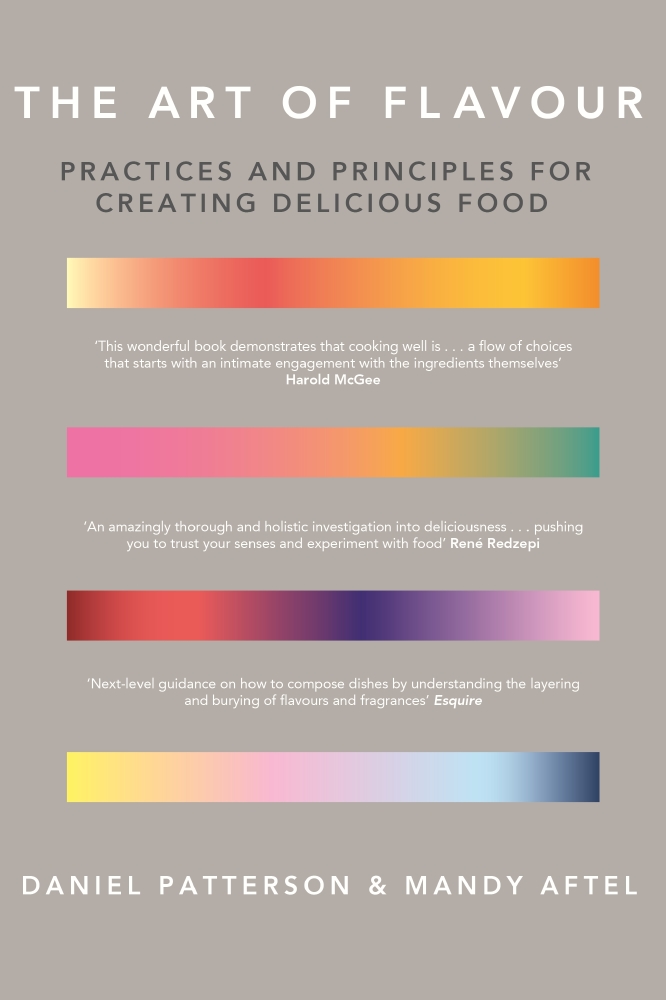How do you begin to divine the specific nature of ingredients when you’re shopping, since you can’t usually taste them? (Though, of course, if they’re offering, sample away!) Bring all your sensory apparatus to bear. Are the leaves bright green and crisp or yellowing and beginning to wilt? Is the fish eye clear and firm? Are the tomatoes firm to the touch or yielding?

The Art of Flavour
Above all, smell! Smelling ingredients is both the most accessible way to assess their taste and the easiest place to begin developing a nuanced appreciation of them, because aroma is already so much a part of the way we experience and know about food. We smell when the cookies are done baking, or when the milk has started to turn. Smells tell a story not just about the static state of an ingredient but also about where it’s been and what’s going on with it. Fresh garlic is sweet and bright; the aroma tells you it would be good used raw. Older garlic tends to smell acrid, moldy, often with subtle notes of rot and decay. This garlic should be cooked, your nose tells you. Same with onions.
Try to start with a centerpiece ingredient that you’re excited about, a familiar favorite you crave or an unfamiliar one you are dying to try. It is much easier to be inspired—to make imaginative, harmonious choices to create interesting flavor—if you are working with ingredients that you are really interested in eating. Usually you can even work with an ingredient that turns out not to be in an ideal state. Flavor is malleable, to a large degree, and even when perfection is not within reach, deliciousness can be attained through the cooking process and an artful combination of ingredients. But when you find an ingredient that’s special—that has flavor to spare—you won’t need to work so hard to make it delicious.
Given a choice, gravitate toward products that seem more alive: brighter, firmer, more aromatic. Time dictates huge variations in the nature of ingredients. With fruit, most obviously, time corresponds to ripeness, which has to do with both sweetness and the complexity of the aromatics. Flavor and aroma generally develop more fully as a fruit ripens. Commercially grown fruit is often picked at a very early stage in order to allow it to be shipped with less damage and to give it the longest possible shelf life. With some exceptions (such as pears and avocados), however, this early harvesting alters the course of the ingredient’s flavor development even as it continues to ripen. Tomatoes that are allowed to ripen on the vine before picking simply taste more like tomatoes. Produce generally degrades in quality with each moment that it’s disconnected from the earth. The intensity of its flavor dissipates; texture turns from tender and crisp to mushy or dry or coarse. There’s an overall loss of what might be called the plant’s life force. For this reason, few herbs dry well; as they dry, they lose the terpene hydrocarbons that give fresh herbs their bright and clean notes. They grow dull and acquire musty and other off notes.
Life force isn’t just a matter of time. Some plants—like some people!—begin with greater life force because of the kind of soil they’re rooted in, the amount of water they get and the nutrients it contains, or simply the variety they are. Countless factors dictate how flavorful the plant will be right out of the ground, and what kind of staying power it will have. Some week-old asparagus may have greater intensity and character than a two-day-old bunch that was cultivated with attention only to ease of harvesting, shipping, and storage.
Be as aware of ingredients when you are shopping as when you are cooking. Because you already are cooking: the process begins with what you choose to begin with. Everything follows from there.

